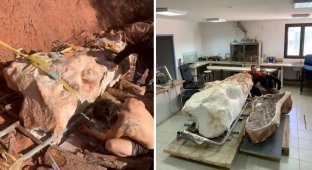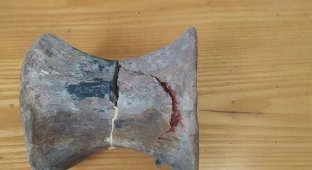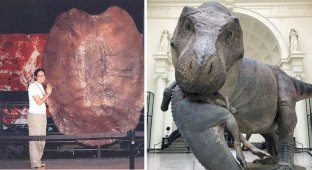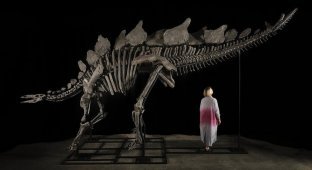Giant dinosaur skeleton discovered in Mississippi (5 photos + 1 video)
A unique paleontological discovery was made in Mississippi - the skeleton of a giant dinosaur dating back 80 million years. State officials called the fossil "incredibly unusual," even though 85 percent of the skeleton is still missing. 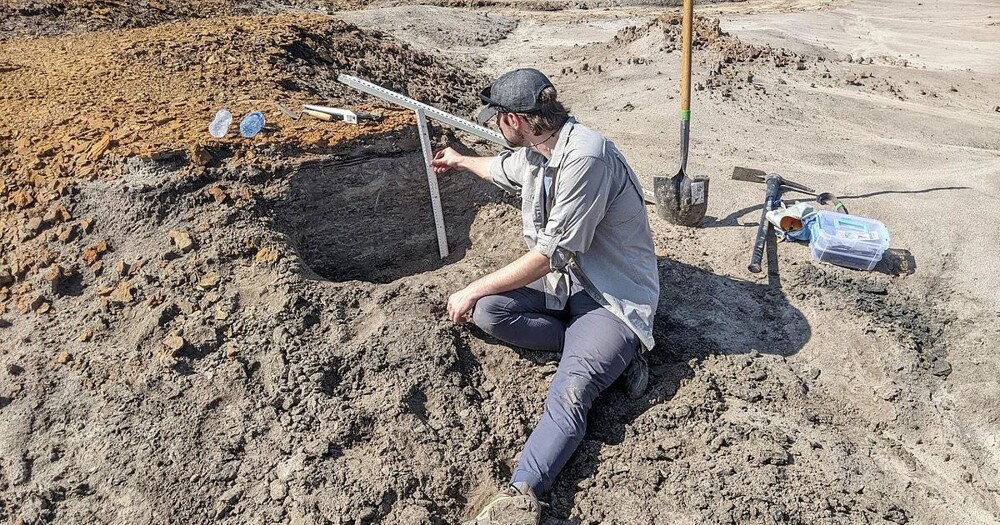
Discovered in 2007 near Booneville, the specimen is the most complete dinosaur fossil ever found in Mississippi. Paleontologists confirmed that it was a representative of the family of herbivorous duck-billed dinosaurs - a hadrosaurus. Hadrosaurs lived more than 82 million years ago. This large family included at least 61 identified individual species and possibly hundreds of unique species. 
Hadrosaurs are a large family of giant herbivorous dinosaurs, believed to include at least 61 identified species and possibly hundreds of unique species that once lived on Earth. The hadrosaurs in the photo are a reconstruction of one of the finds.
Researchers found fragments of a dorsal vertebra, parts of a forearm, foot and pelvic bones, but other parts were difficult to find.
It took almost two decades to study this find. Researchers still cannot determine exactly what type of hadrosaur this skeleton belongs to. “This thing sat there for a while because we didn’t have anyone to take care of it,” said state geological surveyor James Starnes.
University of Southern Mississippi geology graduate student Derek Hoffman is using geometric morphometry to compare the bones to known specimens and determine species identity. “In its simplest form, geometric morphometrics is an approach based on shape analysis,” explains Hoffman. 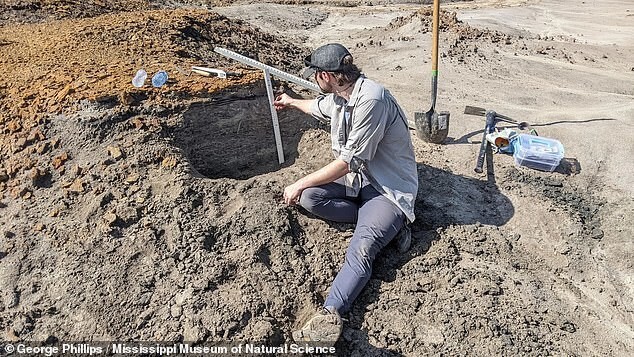
The most complete dinosaur fossil ever discovered in Mississippi is from the family Hadrosaurs, but only 15 percent of it has been recovered. Researcher Derek Hoffman turned to 3D bone analysis to figure out the exact appearance of the hadrosaur.
For a given bone sample, key features or "landmarks" are identified, and then the distances between them and the ratios of those distances are compared using sophisticated statistical models to confirm differences and similarities with known bones. The method has also proven effective in anthropology and in studies of human evolution, including comparisons of the brain cavities of modern humans and our Neanderthal ancestors.
However, Hoffman's search for answers to questions about the fossil hadrosaur is complicated by the fact that some fragments of the creature are in the hands of private collectors. It relies mainly on bones kept in the public domain at the Mississippi Museum of Natural Sciences.
“We have quite a few vertebrae,” said museum curator of paleontology George Phillips. - We have one humerus. We have one ulna bone. The ulna is the back of the forearm. We have some foot bones, and we have a pubic bone.” 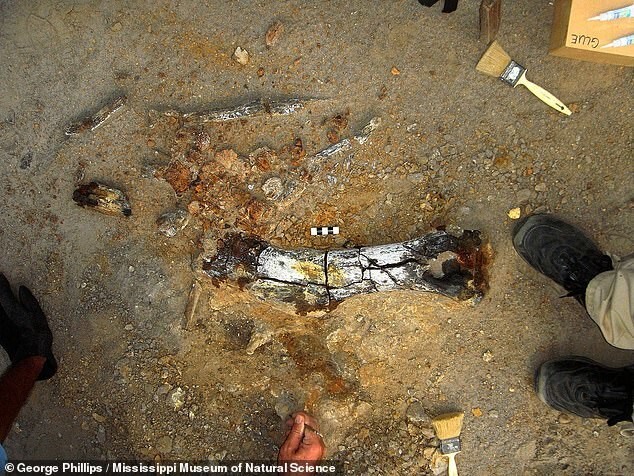
Upper limb bone of an ancient hadrosaur discovered in northeast Mississippi
Hoffman chose the pubic bone for dinosaur identification purposes. Although the differences between the pubis of hadrosaur species are very subtle, often too subtle for the naked human eye to see, their hidden differences can be revealed using rigorous mathematical approaches such as geometric morphometry. The graduate student hopes he can at least narrow down the potential species of hadrosaurs that this Mississippi fossil could belong to.
It is known that the length of this hadrosaurus was 7-8 meters, and its height was about 5 meters when it stood on its hind limbs. Although researchers have not yet been able to find a dinosaur skull, which is key to identifying the species, they hope that further excavations and analysis of the bones will help solve the mystery. 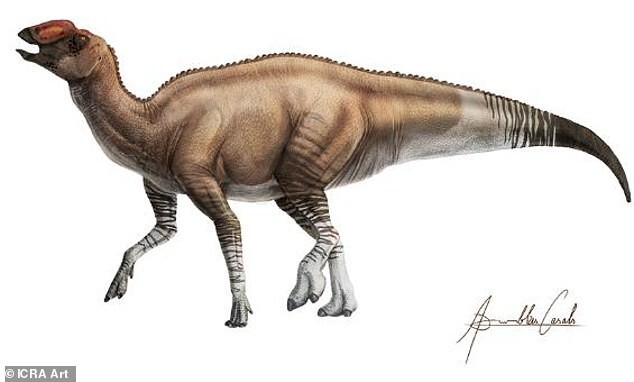
A reproduction of another duck-billed dinosaur from this group, discovered nearby in Texas.
“These are the best-represented dinosaurs in the fossil record, without a doubt,” says Hoffman.
State Representative James Starnes notes that the 2007 find was "incredibly unusual" because they only have fragments and parts of dinosaurs, but not complete skeletons. Despite nearly 20 years of work, researchers continue to recover new specimens and hope to one day fully excavate this giant hadrosaur.












